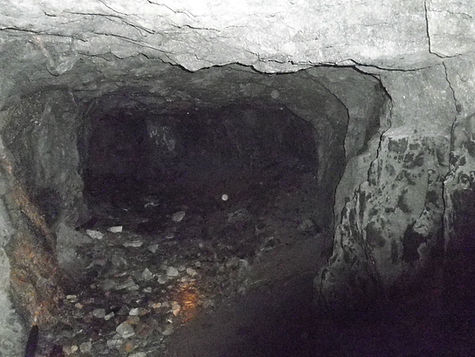
Marvelous Kalen

Kalen, on the western side of Kökar, offers a wonderful view of the Kökar bay to the north and the Baltic Sea to the west. This is one of the most beautiful and perhaps most interesting parts of Kökar. There is magnificent nature here, ranging from old pasture land to a vast marshland and small valleys with almost jungle-like vegetation.
In particular, Kalen is dominated by the grey primary rock. There are long flat rocks and steep hillocks, together forming a tableland. Kalen is majestic to visit during any kind of weather, but especially during storm and rain from the south-west when mighty waves from the Kökar bay roll in.
Several of the ancient and historical monuments of Kökar are situated on Kalen, remnants of seal hunting activities both from the early Bronze Age and the late Iron Age, as well as extensive remnants of Russian fortifications from the First World War, and of Finnish fortifications from the Second World War.
Today, there are only ruins left of the fortifications, but the place is still worth visiting. On Kalen there are also barrows, a labyrinth and mounds of stones that were used for making train oil during the Iron Age.
There is a walking trail leading through the area. You can choose a longer or a shorter distance. A map of the walking trail can be collected at the office of the Kökar municipality, weekdays between 10 am and 2 pm.
Remnants from the World Wars
1915-1918 Russian coastal battery
In spring 1915, the first Russians came to Kökar to set up a small radio- and surveillance post at Kalen. The following year
they started to build a coastal battery, as part of a larger defense system, called ”Åbo-Åland Archipelago Position”.
By the autumn of 1917, the battery was partly operational and consisted of three 120mm twin-guns with double barrels, placed behind concrete walls. A few hundred meters to NW there were a barracks compelx for the crew, 100-150 men, and for the workers. From the battery a small railroad for horse-towed wagons led down to the harbour at Sandvik. The construction works continued until January 1918, when they were stopped due to the turbulent situation in Finland and Russia. The battery was never finished. In the same year Finland, Sweden and Germany decided that the fortifications on Åland had to be destroyed. Accordingly, the coastal battery on Kökar was demolished in 1919. The military equipment was taken over by the Finnish Navy, the barracks were sold, and finally the permanent constructions were destroyed.


1939-1940 Finnish costal fortifikation
In the beginning of the Winter War, Kökar was fortified for the second time. Finnish troops arrived on December 2, 1939, and set up a temporary costal fort, consisting of three 152 mm naval guns. Although Soviet bomber aircrafts regularly flew over Kökar, they never attacked, and the battery never opened fire.
After the declaration of peace on March 13, 1940, it was decided to build a permanent fort. This new phase started in April 1940, when 30 swedish construction workers arrived. Together with local workers from Kökar they started to build in reinforced concrete. The work were, however, abruptly halted in early July, after Soviet demands that Åland had to be demilitarized. The guns and the barracks were dismantled and transported to Alskär in the Turku archipelago, where a new temporarry fort was set up. Finally, in Oktober 1940, the half-finished constructions on Kökar were once again demolished.

1941-1945 Finnish costal fortifikation
In the first days of the Continutation War, Kökar was fortified for
the third time in only 25 years. The same coastal guns were
brought back, and during the following years a strong
permanent fort was built. The main constuctions were three
emplacements for 152 mm guns, one range-finding tower, one
bunker, several machine-gun nests, and approximately 30
buildings. The largest project was a 50 m long tunnel blasted
into the rock, containing technical facilities for electricity and
ventilation, a fire-control station, and accomodation for 120
men. In a side tunnel there was a small field hostpital, with f
acilities for surgery and for treating the wounded and for
surgical operations.
In the cease-fire treaty signed by Finland and the Soviet Union
in September 1944, it was stated that Åland once again had to
be demilitarized. The fort was dismantled and the guns,
ammunition and barracks were transported back to Alskär.
In the spring of 1945, the very strong constructions were finally destroyed by the use of several tons of explosives.
